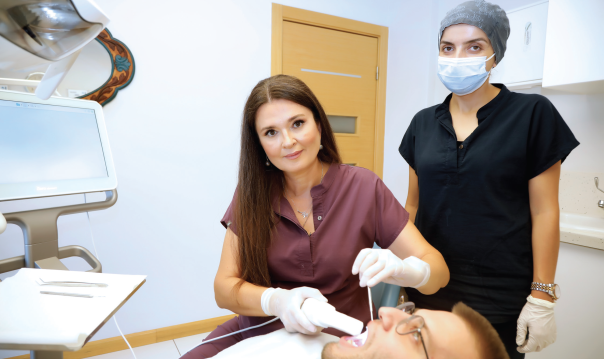Minimally Invasive Approaches in Dentistry

Minimally Invasive Approaches in Dentistry
Zerrin Işık Tüfekçi: Minimally Invasive Approaches in Dentistry
Many patients prefer dental procedures using minimally invasive procedures, particularly when dental tissue is preserved, and treatment time is minimized. Dr Zerrin Işık Tüfekçi, the founder of Evrensel Oral and Dental Health Clinic, describes a minimally invasive approach aimed at decreasing tissue damage.
Beyond doubt, the most eye-catching area of the human face is the mouth, and particularly, the teeth. A smiling person with smoothly arranged white teeth attracts attention and a positive personality. Beautiful and healthy teeth are an invaluable factor contributing to one's personal image.
Treatment alternatives aimed at decreasing tissue damage, known as "minimally invasive procedures" is a leading topic in modern medicine and dentistry today.
As opposed to the past, today's patients possess an increased level of awareness and treatment choices available. Most patients prefer quality treatment techniques which are affordable, easy, painless, time efficient, preserve dental tissue, and minimally disrupt daily routines. For instance, patients dissatisfied with the colour of their teeth may achieve the desired colour via bleaching methods rather than tooth reduction and coating. In addition, patients concerned about teeth malformation, discoloration, and spacing usually prefer porcelain or composite laminates?requiring little or no reduction of teeth rather than tooth coating. Such treatments are known as "bonding" and "porcelain leaf." Even in implantology, short implants or various surgical approaches provide alternatives for those patients preferring a timely treatment process.
Regarding dental misalignment and crooked teeth, physical and psychological problems may manifest within an individual's social realm. Rapid discoloration and decay in crooked teeth often occur. Teeth misalignment often displays an undesirable look, constrains smiling, and usually culminates in gingival issues. Orthodontic treatment options, best treated during childhood, offer "minimally invasive approaches." Adults may feel hesitant to use orthodontic braces due to aesthetic concerns in social situations and in professional positions such as marketing, sales, media, cinema, and theatrical endeavours.
The phrase, "minimally invasive approaches" is prominent among dental professionals. Such procedures are quite popular, particularly with orthodontic treatments using invisible aligners and no visible dental braces. A treatment plan is developed using scanners to acquire precise digital measurements. Oftentimes, three-dimensional (3D) simulations allow the patient to understand the aligners' function and visualize the result. Weekly use of invisible aligners is terminated when the desired dental alignment is achieved. This innovative, aesthetic application of invisible aligners is ideal for the patient who is resistant to using traditional braces and allows for a finished dental alignment without diminishing the natural look of the teeth.
The increase of "minimally invasive approaches" parallels the increase in digital advancements. Such advancements often entail a more rapid treatment time than traditional methods, usually translating to decreased costs. Efficient and affordable techniques contribute to a healthy and enduring smile.
MAG - September 2022
Zerrin Işık Tüfekçi
